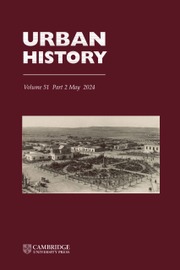Article contents
Extract
The opening lecture of the conference was on a Scottish theme to complement the Scottish venue. Professor JOHN BUTT (Strathclyde) spoke on ‘Working-class housing in the Scottish cities 1900–51’. He began with a fairly traditional picture of working-class housing, which seemed to suggest that it was almost synonymous with slum-dwelling. He also outlined the system of house-letting which operated in Glasgow at the turn of the century, and suggested the impact on the housing market. This system was based upon yearly lets expiring at one date for all but thebottom of the market, where monthly lets were the norm. The main agitation for a change in the letting system came from the mostly ‘respectable’ tenants who occupied yearly-let property, as opposed to the slum-dwellers who rented on a monthly basis. (Regular attenders at the Urban History Group conferences will remember that these themes were discussed in the paper presented by Nick Morgan and Martin Daunton to the Loughborough meeting in 1981; they will also form a major element in Dr Englander's forthcoming book on Landlord and Tenant in Urban Britain 1838–1918.) Professor Butt went on to argue that during the rent strikes of the First World War, it is possible to see a clear distinction between the ‘landlord class’ and the ‘employer class’, the latter not always supporting the view of the former. The final part of the lecture considered the provision of new housing for the working classes after 1918. Detailed figures were provided to support the contention that the building industry and building supplies trade in Scotland were incapable of meeting the demand for new housing from the public sector during the 1930s. He illustrated his argument with specific examples of corporation house-building in Aberdeen, Glasgow, Dundee and Edinburgh.
- Type
- Brief Report
- Information
- Copyright
- Copyright © Cambridge University Press 1983
- 1
- Cited by


